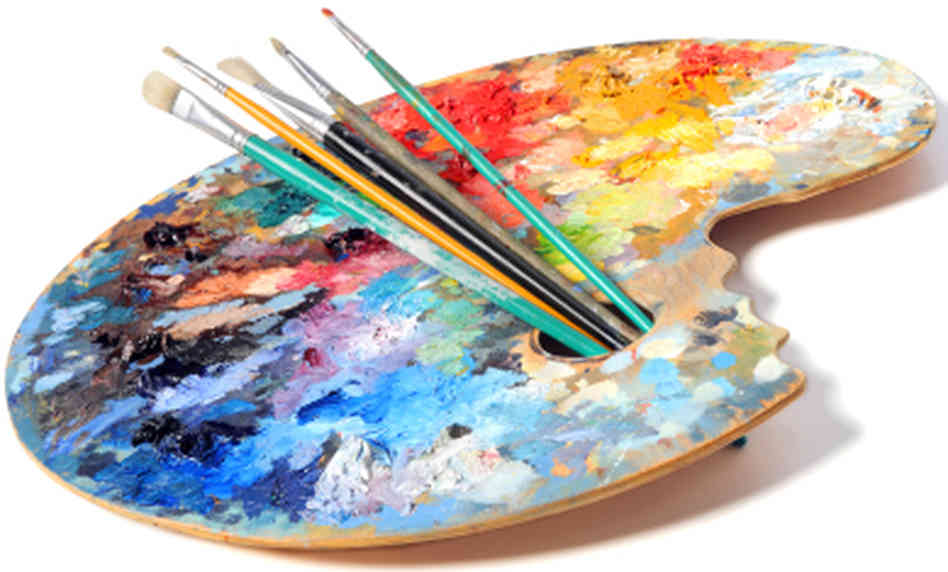Examining the Social Effect of Trump Art on Modern Artistic Movements
Examining the Social Effect of Trump Art on Modern Artistic Movements
Blog Article
Looking Into the Diverse Globe of Artistic Expression: From Surrealism to Abstract Realistic Look
In the world of artistic expression, from the dreamlike landscapes of surrealism to the intricate play of light and kind in abstract realistic look, artists have constantly pushed the borders of creative thinking and imagination. Each movement holds a special lens where the world is seen and analyzed, using a look right into the depths of human emotion, assumption, and thought. As we discover the diverse globe of art, we exist with a tapestry of designs, strategies, and ideologies that challenge our understanding and provoke contemplation. The trip through these diverse kinds of imaginative expression assures to decipher an abundant tapestry of aesthetic storytelling and intellectual inquiry that captivates the mind and stirs the heart.
Surrealism: Releasing the Subconscious
Surrealism, a progressive artistic movement of the 20th century, looked into the midsts of the subconscious, unveiling a world of dream-like imagery and non-traditional associations. Pioneered by artists like Salvador Dali, René Magritte, and Joan Miró, Surrealism sought to challenge the conventional methods of seeing and comprehending art. With methods such as automatism and dream analysis, Surrealist artists aimed to tap right into the subconscious mind to disclose surprise truths and desires.
One of the crucial elements of Surrealism was the focus on the unreasonable and the exceptional. By incorporating unanticipated components in their jobs, Surrealist musicians aimed to create a sense of disorientation and shock in the audience. This disruption of reasoning and factor was indicated to provoke a deeper expedition of the subconscious and the secrets of the human mind.
Abstract Realism: Redefining Perception
Challenging traditional imaginative borders, Abstract Realistic look redefines perception through the blend of identifiable elements with abstract kinds. This cutting-edge strategy to art integrates the representational accuracy of realism with the creative liberty of abstraction, providing visitors a special visual experience that motivates them to question their assumption of truth.
In Abstract Realism, musicians aim to capture the essence of their topics while likewise instilling their deal with a feeling of deepness and complexity via abstract aspects. By blending the acquainted with the unfamiliar, these artists welcome target markets to engage with their pieces on multiple degrees, encouraging them to discover the nuances of color, kind, and structure.

Cubism: Breaking Up Reality
Using fragmented perspectives and geometric types, Cubism changed the artistic representation of fact in the early 20th century. Established by Pablo Picasso and Georges Braque, Cubism looked for to test conventional concepts of viewpoint and representation. By breaking down items and numbers into geometric shapes and providing them from numerous viewpoints concurrently, Cubist musicians intended to capture the essence of the subject as opposed to its literal look. This strategy not only deconstructed reality however likewise stressed the monotony of the canvas, leading the means for future abstract art movements.

Cubism can be categorized into two main phases: Analytical Cubism, characterized by monochromatic color schemes and intricate, fragmented forms; and Synthetic Cubism, which included collage elements and brighter colors into the structures. Through these distinct stages, Cubism affected not only paint yet additionally sculpture, style, and design. trump art. Its impact resounded throughout the art world, inspiring musicians to discover new ways of representing the globe and analyzing around link them
Expressionism: Emotions on Canvas
Exploring the midsts of human emotions through meaningful and vibrant brushstrokes, Expressionism emerged as an extensive artistic activity in the early 20th century. Unlike previous art activities that concentrated on portraying the exterior world, Expressionism looked into the inner realm of the musician's psyche, intending to evoke raw feelings and provoke visceral responses from customers.
Expressionist artists, such as Edvard Munch, Egon Schiele, and Emil Nolde, denied conventional ideas of charm and realistic look for distorting kind and color to share subjective feelings. The usage of exaggerated brushwork, vibrant colors, and distorted numbers aided produce a feeling of unease, alienation, or enthusiasm in their works.
Among the most popular examples of Expressionism is Munch's "The Scream," which catches the extreme stress and anxiety and misery of modern life via its swirling, distorted number versus a blood-red sky. With their psychologically charged jobs, Expressionist artists sought to test conventional creative standards and provide a home window into the unstable depths of the human heart.
Contemporary Art: Evolving Viewpoints

One of the defining characteristics of contemporary art is its continuous development and capacity to adapt to altering social landscapes. Musicians are significantly including technology into their practice, blurring the lines between the electronic and physical worlds. This blend of mediums enables for ingenious methods of storytelling and engaging with audiences in a much more interactive way.
In addition, contemporary art often serves as a system for social commentary, attending to pushing problems such as identification, politics, and the atmosphere. Musicians are utilizing their work to stimulate essential conversations and provoke idea, dropping light on the complexities of the world we stay in. As viewpoints proceed to progress, contemporary art remains a prominent and dynamic force in forming our social landscape.
Final Thought
To conclude, the world of imaginative expression includes a variety of motions and styles, each with its very own one-of-a-kind technique to communicating meaning and feeling. From surrealism's expedition of the subconscious to abstract realism's redefining of perception, and from cubism's fragmentation of fact to expressionism's representation of emotions, art continues to evolve and test viewpoints - trump art. Contemporary art reflects the ever-changing globe we stay in, providing new means to analyze and comprehend the complexities of our fact
As we check out the multifaceted globe of art, we are provided with a tapestry of styles, techniques, and ideologies that test our understanding and provoke consideration. Its effect reverberated across the art globe, inspiring YOURURL.com musicians to check out brand-new methods of interpreting and standing for the world around them.

Report this page